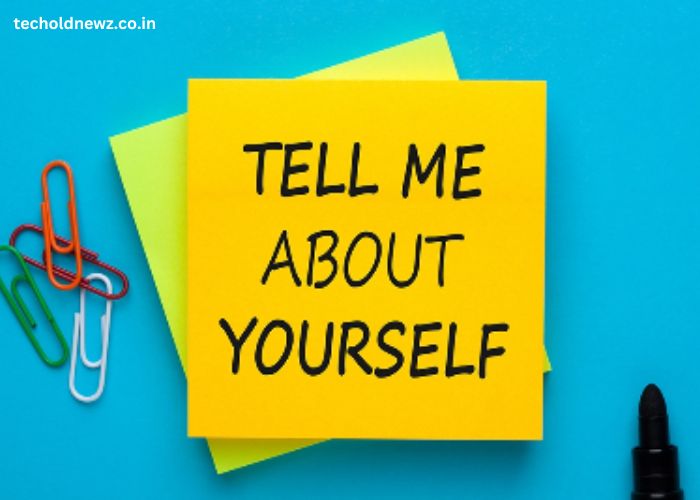Introducing yourself in English can sometimes feel challenging, especially if you’re not comfortable speaking the language. However, mastering the art of a self introduction in English is essential for making a good first impression in both social and professional settings. Whether you are in a job interview, a new classroom, or meeting someone for the first time, knowing how to introduce yourself can set the tone for a positive interaction. In this guide, we will go through the process of creating a strong self introduction in English, step by step.
Key Points:
- A self introduction in English should be simple and clear, highlighting your name, background, and interests.
- Being confident while speaking will make your introduction more effective and engaging.
- Practice is the key to mastering your self introduction in English.
Why Is a Self Introduction Important?
A self introduction in English is often the first opportunity to make an impression. It serves as a way to introduce yourself in a formal or informal manner, and it can influence how others perceive you. Whether you’re speaking to someone for the first time or in a group setting, a good introduction helps build trust and sets a positive tone for the conversation.
Components of a Good Self Introduction:
- Name and background: Always start with your name and a brief background about yourself.
- Professional or academic details: Depending on the context, you may want to mention your job, field of study, or area of expertise.
- Personal interests: Sharing something personal, like hobbies or interests, helps others connect with you on a human level.
- Tone and body language: A friendly tone and positive body language will make your introduction more engaging.
Why Does It Matter?
An introduction plays a crucial role in how others perceive you. Whether in interviews, social events, or meetings, your self introduction sets the stage for how people will view you in future interactions.
Note:
In a professional context, make sure to keep your introduction concise and relevant to the situation.
How to Structure a Self Introduction in English?
To ensure your self introduction in English is clear and structured, there are a few essential steps to follow. By breaking it down into parts, you can make sure that your introduction covers everything important without becoming overwhelming. Let’s explore the typical structure:
1. Start With a Greeting and Your Name
Begin with a friendly greeting like “Hello” or “Hi,” followed by your name. This is the simplest and most effective way to start a conversation.
Example:
“Hello! My name is John Doe, and I’m excited to be here today.”
2. State Your Profession or Study Area
After introducing your name, you can mention what you do for a living or what you are studying. This part will give your listener an idea of your background.
Example:
“I am a software engineer, and I specialize in web development.”
3. Share Your Interests or Hobbies
Adding a personal touch is always a good idea. You can briefly mention your hobbies or what you’re passionate about, as this allows the other person to relate to you on a personal level.
Example:
“In my free time, I enjoy hiking, reading books on technology, and playing the guitar.”
4. Conclude with a Friendly Statement
End your introduction with something engaging and positive, like expressing your excitement about meeting others or being part of the event.
Example:
“I’m looking forward to working with all of you and learning new things together.”
Self Introduction Structure:
| Step | Content |
|---|---|
| Greeting | “Hello, my name is…” |
| Profession or Study | “I am a/an [profession], currently studying…” |
| Hobbies or Interests | “In my free time, I like to…” |
| Friendly Conclusion | “I look forward to…” |
Reminder:
Remember to smile and maintain eye contact while introducing yourself. A confident body language enhances your words.
How to Introduce Yourself in Different Situations?
Your self introduction in English may change depending on the situation. Here, we’ll discuss how to introduce yourself in different contexts, such as formal and informal settings.
1. Self Introduction in Formal Settings
In a formal setting, such as a job interview, conference, or business meeting, your introduction should be concise, respectful, and professional. You want to highlight your qualifications, skills, and experience.
Example:
“Good morning, my name is Sarah, and I’m a project manager with over five years of experience in the marketing industry. I’m currently working with ABC Corp, where I lead a team of 10 people. I’m excited to be here today and looking forward to connecting with professionals in the field.”
2. Self Introduction in Informal Settings
In informal situations, such as a social event or casual meeting, you can make your introduction a bit more relaxed. Here, you can talk about your interests, background, and personal experiences.
Example:
“Hi, I’m Jack. I recently moved to this city, and I’m a graphic designer by profession. I love photography, traveling, and exploring new places. I’m really excited to meet new people and make some new friends here!”
Note:
In informal settings, feel free to add humor or more personal details, as it will make you seem approachable.
Comparison: Formal vs Informal Self Introduction
| Factor | Formal Introduction | Informal Introduction |
|---|---|---|
| Tone | Professional and respectful | Casual and friendly |
| Content | Focus on job/qualifications/skills | Focus on personal hobbies and background |
| Example | “I am a marketing manager with 10 years of experience…” | “I love playing football and exploring new cities!” |
How Can You Improve Your Self Introduction Skills?
Improving your self introduction in English requires practice and attention to detail. Here are a few tips to enhance your self introduction skills and gain more confidence while speaking:
1. Practice Regularly
The more you practice, the more confident you will become. Try to practice your introduction in front of a mirror or with a friend.
2. Keep It Short and Sweet
Don’t overload your introduction with unnecessary details. Stick to the important points that are relevant to the situation. A concise introduction is more likely to grab the listener’s attention.
3. Use Clear and Simple Language
When introducing yourself in English, avoid using complex vocabulary. Keep your language simple, clear, and to the point.
4. Maintain Eye Contact and Body Language
Confidence is key! Use appropriate body language, maintain eye contact, and avoid fidgeting to show that you are confident and approachable.
Reminder:
Avoid speaking too fast. Speaking clearly and slowly gives you more time to think about what you want to say.
Conclusion
A self introduction in English is an essential skill, whether you’re meeting new people, applying for jobs, or simply introducing yourself in different settings. It’s important to tailor your introduction depending on the context, but always remember to keep it clear, concise, and engaging. By practicing and paying attention to body language, you’ll be able to confidently introduce yourself in any situation. A good self introduction not only allows you to connect with others but also leaves a lasting impression.
Key Takeaways:
- A self introduction should be simple, structured, and relevant to the situation.
- Confidence and clear communication are key to making your introduction effective.
- Practicing your introduction regularly can help improve your speaking skills.
Important Reminder:
Make sure to practice your introduction in front of a mirror or with friends to increase your confidence.
FAQ’s
1. What should I include in my self introduction?
In a self introduction, include your name, profession or field of study, hobbies, and a friendly conclusion.
2. How do I introduce myself in a job interview?
In a job interview, focus on your professional experience, qualifications, and skills relevant to the job. Keep your introduction formal and concise.
3. How can I sound confident while introducing myself?
To sound confident, practice your introduction regularly, use clear and simple language, and maintain eye contact and good posture.
4. How long should my self introduction be?
Your self introduction should be brief, typically lasting between 30 seconds to a minute, depending on the setting.
5. Can I add humor in my self introduction?
In informal settings, it’s okay to add a touch of humor. However, in formal settings, it’s best to keep your introduction professional.


